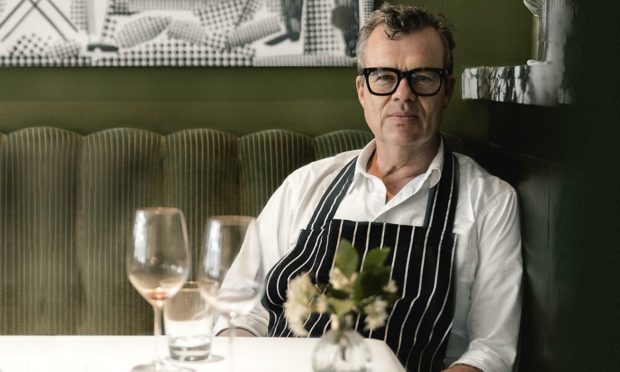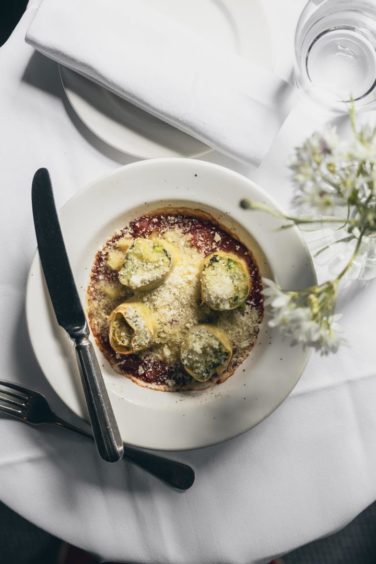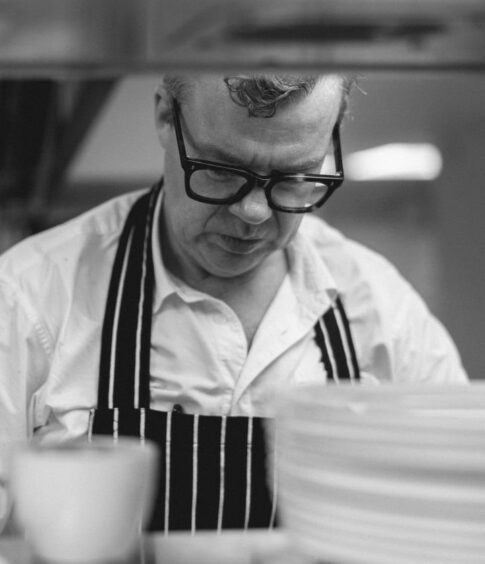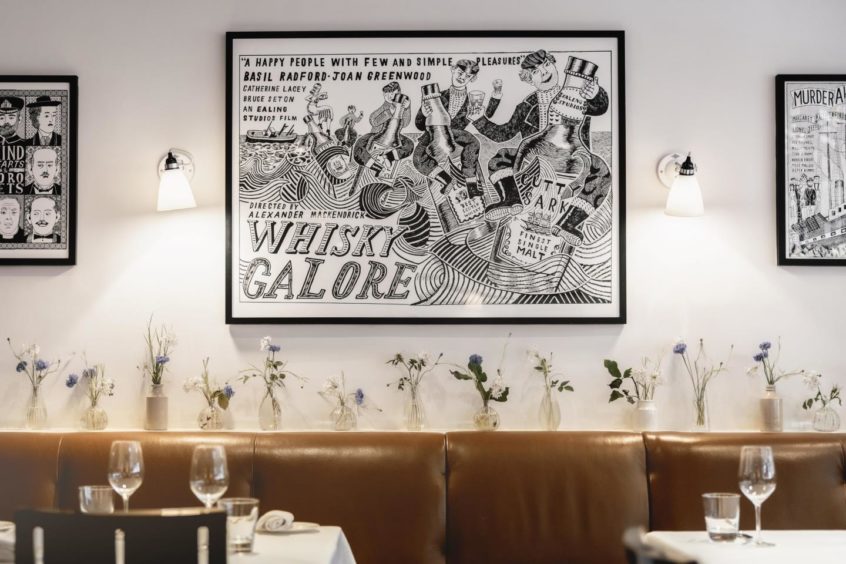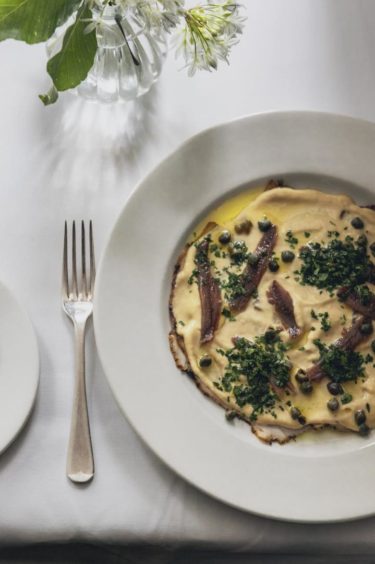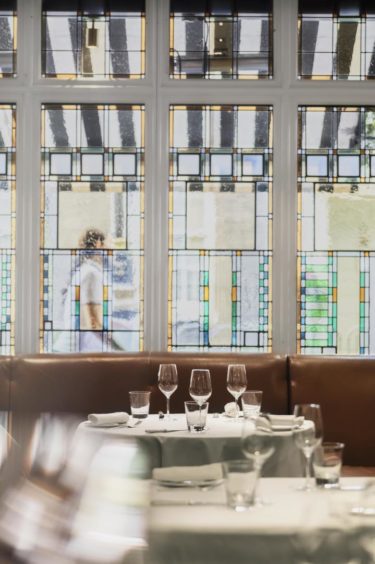Rebecca Shearer talks to Dundee-born chef Jeremy Lee, whose love for the Scottish larder and his mum’s cooking has inspired his dishes at Soho’s Quo Vadis restaurant.
At the helm of one of Soho’s most prestigious restaurants, Quo Vadis (pronounced “Kwo-vah-diss”) is Dundee-born head chef Jeremy Lee.
The 58-year-old, who spent the first 21 years of his life living in Kirkton of Auchterhouse, just outside the city, came from humble beginnings, with a mum who taught domestic sciences at Morgan Academy and a dad who drew comics for various magazines at DC Thomson.
His mum’s cooking skills and his dad’s love of food is what Jeremy says helped to make him the chef he is today.
The beginning
“My parents love cooking and they loved food. Mum was a very good cook and her dad was a jute agent for one of the big firms in Madras, so she grew up in India and came over during the Second World War,” he said.
“Mum would cook every single day, we would have something freshly cooked and baked every day after she got home from work.”
Growing up on the outskirts of the city, surrounded by raspberry fields, was also something that Jeremy says has influenced much of his career.
“We grew up in Auchterhouse, though I was educated at High School of Dundee, but we were surrounded by raspberry fields, which I think have been shoved back as far as Blairgowrie now,” he said.
“One of the things that always astonishes me when I hark back, which sadly isn’t very often, is the natural larder of Dundee and Angus. It’s incredible.
“I don’t cook with much Scottish produce as there isn’t a lot of it that makes its way down to London, sadly. What I like to think is the same as Italian produce – it doesn’t come this way because it’s being used so much in the home nation.”
Coming home
After leaving Dundee when he was 21 to take on a work placement in London, coming back to his homeland is something Jeremy feels he doesn’t get to do enough, with an upcoming flight from London to Dundee being one of the first trips he hopes to take this year.
“I haven’t been back to Dundee often enough although we still have our parents house just outside the city,” he added.
“What’s brilliant is looking from afar as Scotland seems to just go from strength to strength, confidence is rising and awareness of the quality of the natural produce there – East Neuk fish, Aberdeen Angus beef etc., Scotland has so much to offer.
“I’d like to think there is more awareness and pride in what Scotland is doing when it comes to food, and I think it’s important to cherish what we have. The Brits are amazing in that we can always come in when there’s a crisis – we’re hopeless in peacetimes but we’re really good in a crisis. And as food is heading into crisis levels, Scotland’s got vast more than many other countries.
“When I do come back, however, two great friends of mine are the owners of the Kinneuchar Inn near St Monans. They used to be neighbours of mine in Hackney, where I live now, so I will go visit them when I’m back.”
From waiter to chef
Though opting to focus more on art in his early education years, Jeremy found his way into cooking not from school but from working as “a dreadful waiter” at a local hotel.
“We had home economics at school but I never really felt the need to take it as I was learning all I needed from mum. I ended up just pursuing art at school and, actually, that was where I was headed before I segwayed into cooking by default,” he continued.
“I used to work at the Old Mansion House Hotel in Auchterhouse, which sadly doesn’t exist anymore. As fate would have it I was a dreadful waiter – all I did was talk to everyone.
“Then, instead of sacking me for being a rubbish waiter, they put me in the kitchen as a commis chef and suddenly I’d swapped epaulettes for a tall white hat, found myself in the kitchen and something stuck.
“My colleagues there were amazing chefs and, when I turned 21, after a brief stint at the Old Course Hotel – I am not a hotel person at all – they sent me to London to work with their old alma mater.
“It was almost like going to finishing school – it was a highly polished, extraordinarily grand place with beautiful, but very plain, cooking. And that’s what set me on the course for being a chef in London.”
Quo Vadis
Now, Jeremy is working as a head chef in one of London’s most affluent areas, Soho, at part-private members restaurant and club Quo Vadis, which used to be a home for Karl Marx.
He said: “Quo Vadis is one of the last great bastions of the old Italian restaurants that used to thrive within a huge Italian community. The building is almost 100 years old and has been a brothel and a home to Karl Marx in its past life, and it’s remarkable it has survived.
“My partners in crime, brothers Eddie, Sam and James Hart, bought it around 12 years ago, and I’ve been here for almost 10 of those. It’s just a joy to have something like this in my life.
“Quo Vadis is all things to all people, it’s unique in that it is public and private simultaneously. On the ground floor we used to have a big dining room there but that was gifted to our sister restaurant, Barrafina, which is the boys’ other endeavour.
“So we are now a sequence of small rooms on many floors. There’s still Quo Vadis on the ground floor with a little terrace outside, then on the first floor we have a members’ club with a private members’ dining room in it, then on the top floor we have more private dining rooms.
“We try to use every nook and cranny in the place. There’s always a little corner you can sit down in and eat, drink and make merry. But, primarily, the food is the main focus.
“The theme of the restaurant and the food is like a survivor of old times. If you follow how I cook, there’s always a strong British focus from back in the day. I think mum has influenced my cooking more than anything.”
